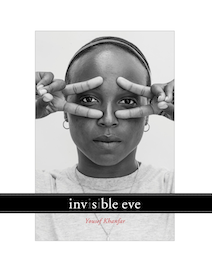Here is one of the questions I get asked all of the time. Why do I choose to work primarily within prisons and directly with incarcerated women, instead of focusing on influencing change to the prison system as a whole?
Great question.
While I absolutely hope to bring about change from the top down, this type of change takes time. It takes changing the status quo, which can be a labor intensive and slow process. And while this type of change is ultimately a goal of mine, what happens to the women in the system right now? How does change that could take years impact their lives and the lives of their families immediately?
So while I would love to see change in how prisons are run and have impact on the sentences of those convicted of non-violent crimes, I feel the profound need to start making a change right now.
There are many ways to get involved in increasing the awareness around the issue of the incarceration of women in the various prison systems across the US. With the rates of incarceration rising across the country, and certainly in more so in some states, it really is time to take notice of this forgotten population that will be re-entering society at some point.
What investment are we making to ensure that this re-entry is smooth for the community, the individual, and their family? And while many feel that this issue is too large to effectively address, and believe me, at times it feels like it is… One of the best first steps is to increase awareness around the issue as a whole.
Over the coming weeks I’ll speak directly to some of the statistics that begin to paint the picture of the issue at hand. But before I get into the numbers, I wanted to highlight a colleague of mine who is putting a face to the women (and their families) who either are, or have been incarcerated in Oklahoma.
I’d like to introduce you to Yousef Khanfar, who has recently released “Invisible Eve”, available here.
What I find inspiring about Yousef’s work is that he (in his words) is looking to build “Bridges of Understanding”. His book is a collection of photographs that capture real moments in the lives of these women, and in some cases, moments with their children.
In a recent article Khanfar is quoted as saying “This is a very traumatic experience for these children that leaves a permanent scar in their souls,” he said. “We often forget that many of these women are mothers, and when we imprison mothers, we imprison families. It’s the children who are paying the ultimate price. So, this project is a call to action, a celebration of women, and also a reminder that the mother is the center of the family.” (source: http://newsok.com/photographer-hopes-to-reduce-high-rate-of-womens-incarcerations-in-oklahoma/article/3855083/?page=1 )
I can’t help but be moved by his photographs, and I encourage you to take a look at his work and see the woman (and the family) behind the image.
How can you get involved right now?
If you’d like to volunteer your time, we have multiple opportunities for you to become involved – I’d love to chat with you about this more! Not all of our volunteers work in the prisons some provide some much needed behind the scenes support.
But you can get involved right now by taking this issue out of the shadows and into your life. Learn more about the state of our prisons by doing some research online, and share what you’ve learned with others.
We can make a difference, together.